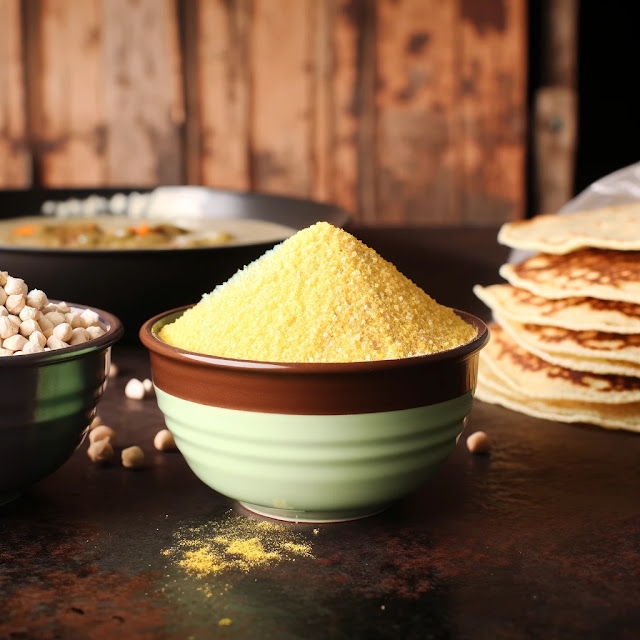How Does Sooji Nutrition Compare to Gram Flour Benefits?
Sooji, also known as semolina, is a coarse flour made from durum wheat. It is popular in many cuisines around the world and is used to make various dishes, including pastas, breads, and sweets. Sooji is highly valued not only for its versatility in cooking but also for its nutritional benefits. In this article, we will explore the benefits of sooji and its nutritional content, particularly focusing on how it compares to gram flour, another commonly used flour.
What is Sooji?
Sooji or semolina is made by grinding the hard part of wheat called durum wheat. It has a slightly yellowish color and a coarse texture. Sooji is a staple ingredient in South Asian and Middle Eastern cuisines, often used to make dishes like upma, halwa, and various types of bread.
Nutritional Benefits of Sooji
1. Rich in Protein and Vitamins:
Sooji is a good source of protein, which is essential for building and repairing tissues in our body. It also contains several B vitamins, particularly vitamin B3 (niacin), which helps in converting food into energy.
2. Provides Energy:
Due to its high carbohydrate content, sooji provides a quick source of energy, making it a popular choice for breakfast dishes. The energy from sooji is released slowly into the bloodstream, which helps in maintaining stable blood sugar levels.
3. Low in Fat:
Sooji is low in fat, which makes it a healthier choice for individuals watching their fat intake. This low-fat content also makes it easier to digest.
4. Rich in Iron:
Sooji is a good source of iron, a mineral that is crucial for the production of hemoglobin, the protein in red blood cells that carries oxygen throughout the body. This makes sooji beneficial for preventing anemia.
Comparison with Gram Flour
Gram flour, also known as chickpea flour or besan, is made from ground chickpeas. It is rich in protein, fiber, and has a lower glycemic index compared to sooji. Here’s how sooji compares with gram flour:
1. Protein Content:
While both sooji and gram flour are good sources of protein, gram flour generally has a higher protein content. This makes gram flour a better option for those needing higher protein intake.
2. Fiber Content:
Gram flour contains more dietary fiber than sooji, which is beneficial for digestive health and helps in regulating blood sugar levels.
3. Gluten-Free:
Unlike sooji, which is made from wheat, gram flour is naturally gluten-free. This makes it a suitable alternative for those with gluten sensitivities or celiac disease.
4. Use in Cooking:
Both sooji and gram flour are versatile in cooking. Sooji is typically used for making porridge, pastries, and as a thickening agent in soups. Gram flour is popular in making pancakes, batters, and as a binding agent in vegetarian burgers.
How to Include Sooji in Your Diet
Sooji can be included in the diet in various ways. It can be used to make a quick and nutritious porridge for breakfast, added to soups for extra thickness, or used in baking to make breads and cakes. It's also commonly used to make a sweet dish called halwa, which is often flavored with cardamom and nuts.
Conclusion
Sooji is a nutritious food item that offers several health benefits, including providing energy, being low in fat, and rich in protein and vitamins. While it is not gluten-free and has lower fiber content compared to gram flour, it remains a valuable ingredient for various culinary uses. Whether you choose sooji or gram flour depends on your dietary needs and cooking preferences. Both flours offer unique benefits and can be included as part of a balanced diet.




Comments
Post a Comment